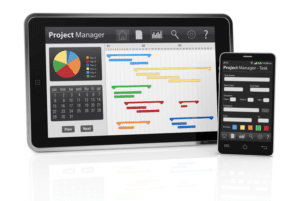
Small businesses can depreciate machinery, equipment, buildings, vehicles, and furniture. If a business uses an asset, such as a car, for business or investment and personal purposes, the business owner can depreciate only the business or investment use portion. Land is never depreciable, although buildings and certain land improvements may be. Section 1245 recaptures depreciation or amortization allowed or allowable on tangible and intangible personal property at the time a business sells such property at a gain. Section 1245 taxes the gain at ordinary income rates to the extent of its allowable or allowed depreciation or amortization. For information about qualified business use of listed property, see What Is the Business-Use Requirement in chapter 5.
The straight line and declining balance methods discussed in this section are not figured in the same way as straight line or declining balance methods under MACRS. Net salvage is the salvage value of property minus what it costs to remove it when you dispose of it. You can choose either salvage depreciable property value or net salvage when you figure depreciation. You must consistently use the one you choose and the treatment of the costs of removal must be consistent with the practice adopted. However, if the cost to remove the property is more than the estimated salvage value, then net salvage is zero.
What Does It Mean to Depreciate a Rental Property?
You leave the unadjusted basis of the property in the account until recovered in future years. If you did this, include the total proceeds realized from the disposition in income on the tax return for the year of disposition. Under ACRS, you could also elect to use the alternate ACRS method for 15-year real property. The alternate ACRS method allows you to depreciate your 15-year real property using the straight line ACRS method over the alternate recovery periods of 15, 35, or 45 years. If you selected a 15-year recovery period, you use the percentage (6.667%) from the schedule above.
- If you’re unfamiliar with what you can include in your depreciation calculation, you should have an accountant help you.
- Of the 12 machines, nine cost a total of $135,000 and are used in Sankofa’s New York plant and three machines cost $45,000 and are used in Sankofa’s New Jersey plant.
- The property must have an anticipated usable lifespan of more than one year.
- If you have a tax question not answered by this publication, check IRS.gov and How To Get Tax Help at the end of this publication.
It does not include a unit in a hotel, motel, inn, or other establishment where more than half the units are used on a transient basis. A retirement is generally considered normal unless you can show that you retired the property because of a reason you did not consider when you originally estimated the useful life of the property. To make the request, file Form 3115 during the first 180 days of the tax year for which you want the change to be effective.
What Is Section 1231 Gain?
For tax years beginning in 2020, the maximum section 179 expense deduction is $1,040,000 ($1,075,000 for qualified enterprise zone property). Companies take depreciation regularly so they can move their assets’ costs from their balance sheets to their income statements. When a company buys https://www.bookstime.com/articles/bookkeeping-las-vegas an asset, it records the transaction as a debit to increase an asset account on the balance sheet and a credit to reduce cash (or increase accounts payable), which is also on the balance sheet. Neither journal entry affects the income statement, where revenues and expenses are reported.
Retirements can be either normal or abnormal depending on all facts and circumstances. The rules discussed next do not apply to MACRS and ACRS property. As you can see from this example, your adjusted basis in the property gets smaller each year. Also, under this method, deductions are larger in the earlier years and smaller in the later years. You can make a change to the straight line method without consent.
Depreciation Recapture: Definition, Calculation, and Examples
The land improvements have a 20-year class life and a 15-year recovery period for GDS. If your business use of the car had been less than 100% during any year, your depreciation deduction would have been less than the maximum amount allowable for that year. However, in figuring your unrecovered basis in the car, you would still reduce your basis by the maximum amount allowable as if the business use had been 100%.
- Indiana exempted at least 70 percent of businesses for less than 0.5 percent of property tax collections.
- If the MACRS property you acquired in the exchange or involuntary conversion is qualified property, discussed earlier in chapter 3 under What Is Qualified Property, you can claim a special depreciation allowance on the carryover basis.
- You use the recovery period under this asset class because it specifically includes land improvements.
- For small businesses, this can be a lot of work—often wildly disproportionate to the amount actually owed.
- Because the house was placed in service after June 22, 1984, and before May 9, 1985, it is 18-year real property.
You refer to the MACRS Percentage Table Guide in Appendix A to determine which table you should use under the mid-quarter convention. The machine is 7-year property placed in service in the first quarter, so you use Table A-2 . The furniture is 7-year property placed in service in the third quarter, so you use Table A-4. Finally, because the computer is 5-year property placed in service in the fourth quarter, you use Table A-5. Knowing what table to use for each property, you figure the depreciation for the first 2 years as follows. Under this convention, you treat all property placed in service or disposed of during any quarter of the tax year as placed in service or disposed of at the midpoint of that quarter.
